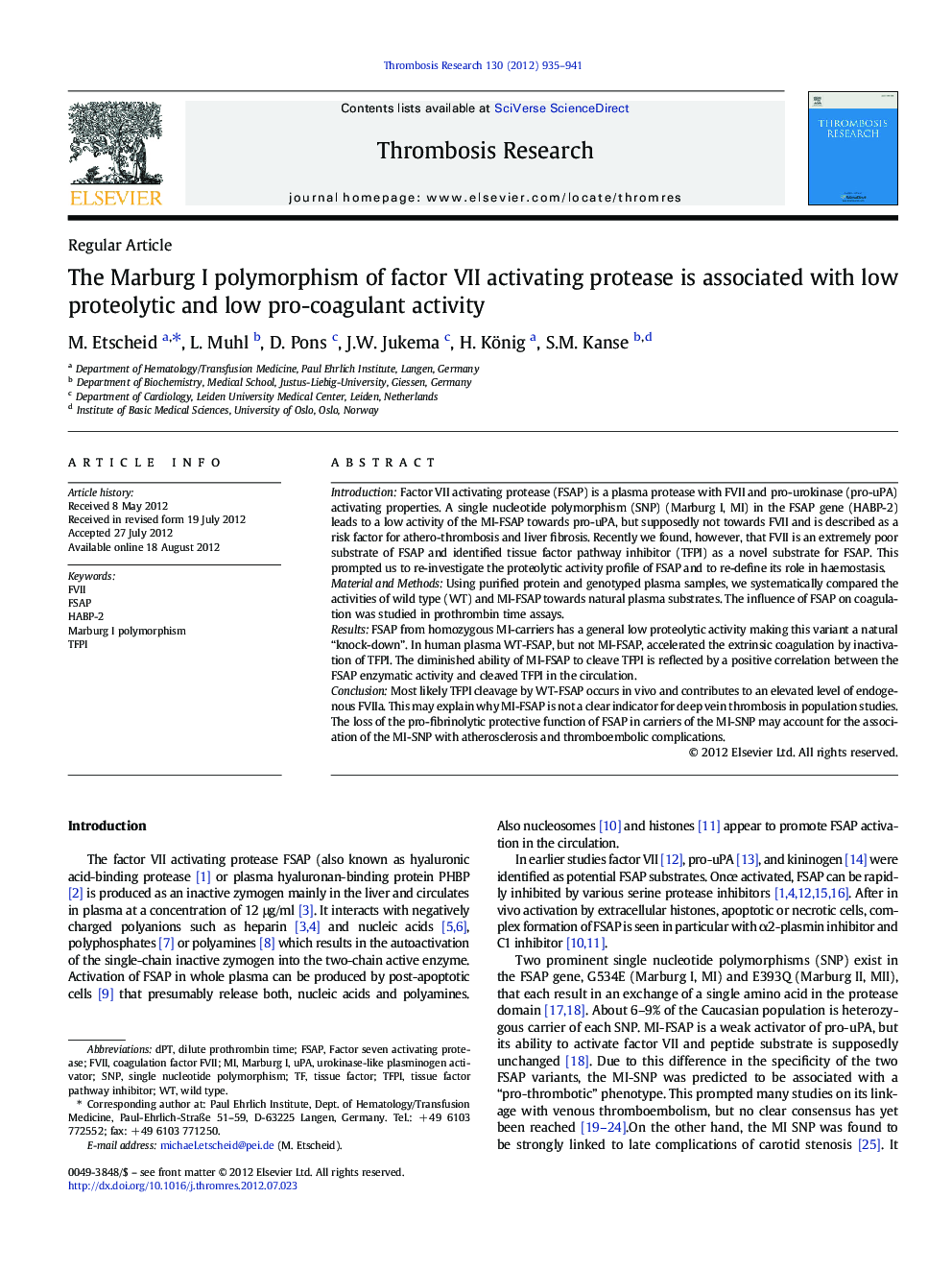| Article ID | Journal | Published Year | Pages | File Type |
|---|---|---|---|---|
| 3028074 | Thrombosis Research | 2012 | 7 Pages |
IntroductionFactor VII activating protease (FSAP) is a plasma protease with FVII and pro-urokinase (pro-uPA) activating properties. A single nucleotide polymorphism (SNP) (Marburg I, MI) in the FSAP gene (HABP-2) leads to a low activity of the MI-FSAP towards pro-uPA, but supposedly not towards FVII and is described as a risk factor for athero-thrombosis and liver fibrosis. Recently we found, however, that FVII is an extremely poor substrate of FSAP and identified tissue factor pathway inhibitor (TFPI) as a novel substrate for FSAP. This prompted us to re-investigate the proteolytic activity profile of FSAP and to re-define its role in haemostasis.Material and MethodsUsing purified protein and genotyped plasma samples, we systematically compared the activities of wild type (WT) and MI-FSAP towards natural plasma substrates. The influence of FSAP on coagulation was studied in prothrombin time assays.ResultsFSAP from homozygous MI-carriers has a general low proteolytic activity making this variant a natural “knock-down”. In human plasma WT-FSAP, but not MI-FSAP, accelerated the extrinsic coagulation by inactivation of TFPI. The diminished ability of MI-FSAP to cleave TFPI is reflected by a positive correlation between the FSAP enzymatic activity and cleaved TFPI in the circulation.ConclusionMost likely TFPI cleavage by WT-FSAP occurs in vivo and contributes to an elevated level of endogenous FVIIa. This may explain why MI-FSAP is not a clear indicator for deep vein thrombosis in population studies. The loss of the pro-fibrinolytic protective function of FSAP in carriers of the MI-SNP may account for the association of the MI-SNP with atherosclerosis and thromboembolic complications.
